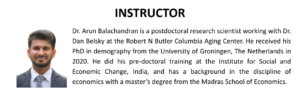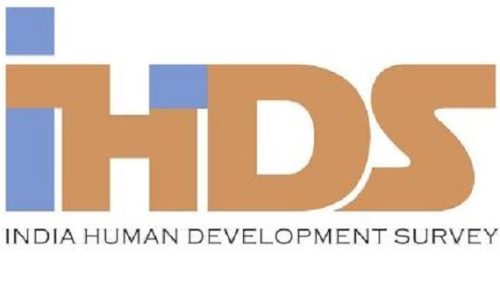lp_course
The Indian Human Development Survey (IHDS), a collaborative initiative between the National Council of Applied Economic Research (NCAER) and the University of Maryland, is a nationally representative, multi-topic panel survey of 41,554 households in 1503 villages and 971 urban neighborhoods across India. The IHDS is the only nationally representative longitudinal survey in India, which collects data on different dimensions of human development like education, caste, gender relations, and infrastructure. It is a unique resource for researchers, policy makers, and journalists. A one-of-a-kind panel study that has interviewed over 42,152 households in 1,420 villages and 1,042 urban neighborhoods across India. The IHDS has two waves/panels of the dataset. IHDS 1 was conducted in 2005-2006, and IHDS 2 in 2011-2012. There is an 85% re-interview rate between the two surveys. India has experienced two decades of breathtaking transformation, and IHDS has documented the concurrent demographic change. IHDS 3 is slated for release in 2025.
IHDS 1 and 2 were designed to complement existing Indian surveys by bringing together a wide range of topics in a single survey. This breadth permits analyses of associations across a range of social and economic conditions. For example, studying children’s outcomes (e.g., learning, immunizations) requires joint consideration of the role of poverty, family structure, gender relations, community context, and the availability of facilities. Many of these are available in both the IHDS surveys and will be available in the forthcoming IHDS 3. IHDS 3 is currently under construction.
IHDS is a collaborative project from the University of Maryland, College Park; the National Council of Applied Economic Research (NCAER) in Delhi; Indiana University and the University of Michigan.
Expectations and Goals:
By the end of the course, course participants will develop skills to understand and analyze IHDS data. The course is ideal for research scholars, public policy makers, and journalists. New wave of IHDS is ongoing, and a better understanding of it will be useful for analyzing change in the Indian socioeconomic scenario in the last 20 years.
Click the link to view the flyer: IHDS Workshop
Features
- Able to use STATA using IHDS data
- Able to comprehend descriptive and bivariate analysis of different modules in IHDS data
- Replication of a set of studies published using IHDS database
- Empowered to handle independently analysis using IHDS data
Target audiences
- Researchers and Academics
- Health care professionals
- Students and Trainees
- Development Practitioners
- Data Analysts and Scientists
Requirements
- A laptop, PC, or tablet with a stable internet connection.
Curriculum
- 2 Sections
- 3 Lessons
- 2 Days
- Day 1 (August 7th| 7: 00 PM to 8:30 PM)Introduction to IHDS and STATA Basics2
- Day 2 (August 9th| 7:00 PM to 8:30 PM)Hands-on Data Analysis with IHDS Using STATA1
FAQs
Instructor


